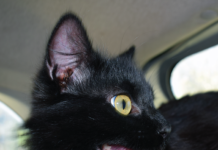High rise syndrome (HRS) is a term used for injuries sustained when pets fall from buildings. While retrospective studies investigating the prevalence of injuries to various organ systems and of survival in canine HRS have been published, few studies focusing on predictors of survival in feline HRS have been published. A study published in the Journal of Feline Medicine and Surgery evaluated the prognostic utility of the Animal Trauma Triage Score (ATTS) and Modified Glasgow Coma Scale (MGCS) in cats with high-rise syndrome.
Using information from 25 cases in the study, the researchers found that the mortality rate in this cohort of cats with HRS was 16%. Univariate statistical analysis showed that lactate, creatinine, body weight, and ATTS were higher and MGCS lower among non-survivors.
Multivariable statistical analysis showed that ATTS was the only factor significantly associated with mortality. The researchers concluded that ATTS is predictive of severity and outcome in cats with HRS and can help facilitate decision-making by owners and veterinarians. ATTS is calculated using physical examination findings from the vascular, cardiac, neurologic, skeletal, respiratory, and eye/muscle/integument systems.




